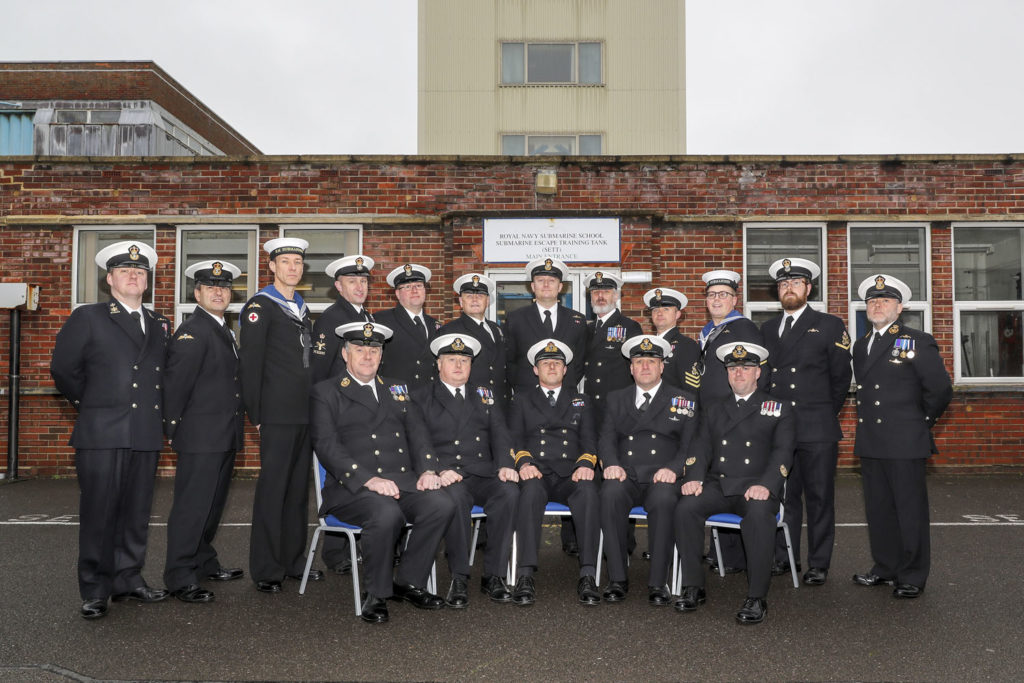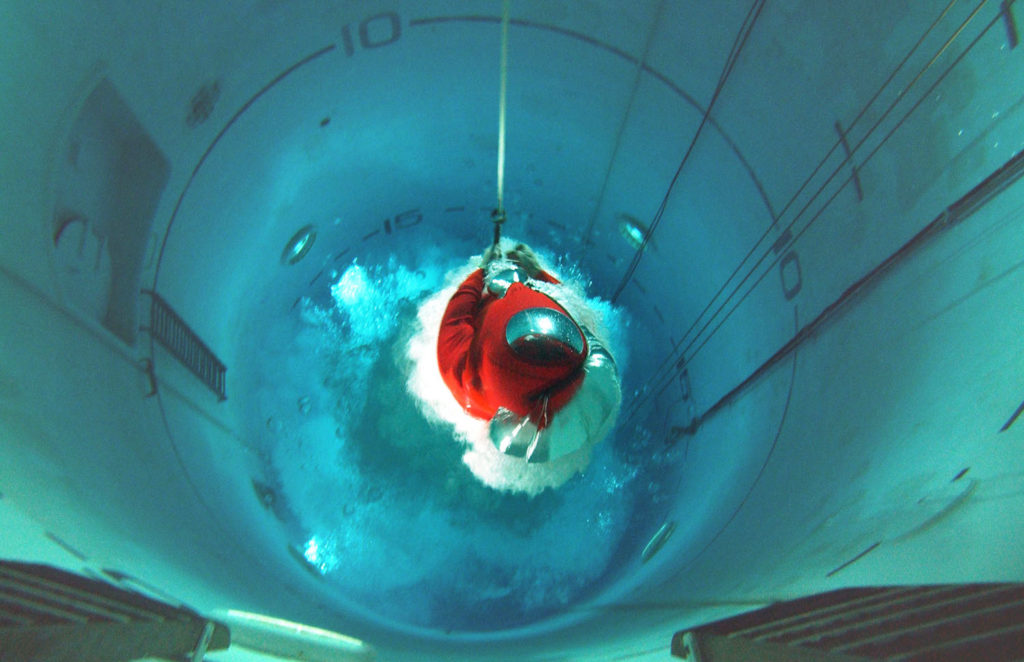Gosport’s iconic Submarine Escape Tower closes
 Submariners inside the Submarine Escape Training Tank (SETT), Fort Blockhouse Gosport for the final time.
Submariners inside the Submarine Escape Training Tank (SETT), Fort Blockhouse Gosport for the final time.
Gosport’s Submarine Escape Training Tank (SETT) closes as the entire submarine flotilla moves to Faslane. The move, coupled with advances in submarine design, escape training and changes in the way rescues are handled, mean the SETT is no longer required.
The tower was built between 1949 and 1953 as part of a revamp of submarine escape training and tens of thousands of submariners trained at SETT since July 13 1954 when the first man ascended the 100ft column of water to simulate emerging from a sunken submarine. Using the tank, submariners are expected to escape without breathing apparatus; they use a specially-designed escape suite to breathe as required.
4500 submariners every year made the vertical ascent during its peak in the 1960s and 70s, and the escape tank has been used approximately 150,000 times in its 66-year existence.

Replacing the escape tower, the SubMarine Escape Rescue Abandonment and Survival Training Facility (SMERAS TF) will open later this year. The current team in Gosport will be moving en-masse to Faslane, leaving a skeleton team behind on the south coast.
“2020 marks the end of an era, so it’s a poignant moment for all of us,” says Lieutenant Commander Gareth ‘Griff’ Griffiths, in charge of the team. “We’re looking forward to carrying the lessons of our past many years into the future of submarine escape, rescue, abandonment and survival training.”

SETT will be preserved as it is a listed building, protected by law for its national and international role in submarine safety.
Read the full story on the Royal Navy website.










